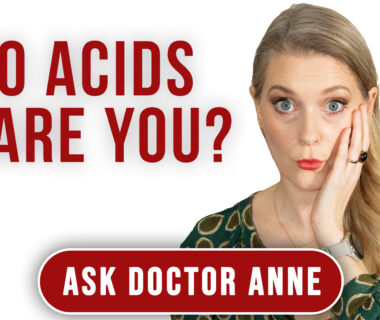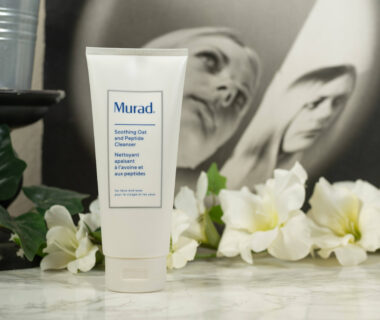ADVERTISEMENT INFO: PRODUCTS MENTIONED IN THIS POST ARE PURCHASED MYSELF AND LINKS USED ARE AFFILIATE LINKS. I RECEIVED NO MONEY TO WRITE THE BLOGPOST. PLEASE READ DISCLAIMER
What if I told you that there is an ingredient you have most likely been using for years that is moisturizing, anti inflammatory, helps repair the skin barrier and can even help with wound healing through fibroblast activation? I am talking about Panthenol or Provitamin B5 that you’ll find in many products ranging from nappy cream to the La Roche Posay Cicaplast or Hyalu B5 line.
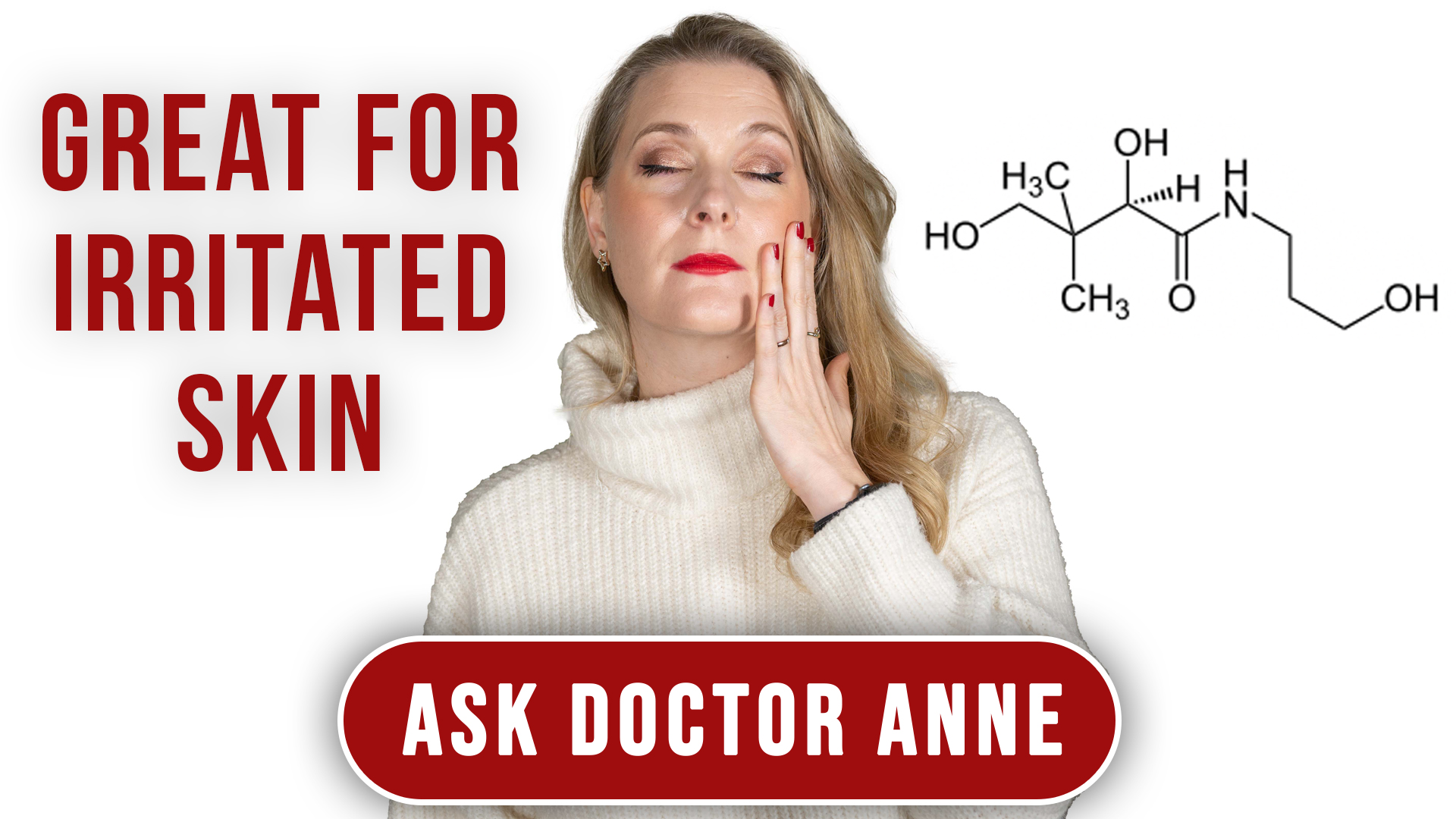
But what hides behind the name? Is there data on the benefits of Panthenol for the skin, what do you need to look for when choosing your products and is Panthenol good for acne as well as for scars?
Let’s talk!
What is Panthenol?
Panthenol is the water-soluble alcohol analog of Pantothenic Acid (the actual Vitamin B5) or, in terms of performance, the precursor to it, as it needs one conversion step. That is why it is often referred to as Provitamin B5. As it is an enantiomer, so a molecule that exists in two mirror images, there is Dexpanthenol and Levopanthenol, out of which only the Dexpanthenol is the biologically active one, so the one you should look for in the product.
The beauty of Dexpanthenol is that it is easily absorbed into the skin after topical application as part of a water-in-oil emulsion, is then converted into Pantothenic Acid, which is converted into 4´-phosphopantetheine, which is then again converted to Coenzyme A.

What does Dexpanthenol do in the skin
First of all, Dexpanthenol acts as a humectant, meaning it increases skin hydration. (More info: Everything you need to know about humectants) Through the conversion to Coenzyme A it also supports different steps in the synthesis of fatty acids and sphingolipids, which are essential for repairing an impaired skin barrier. (More info: Damaged skin barrier – reason for acne and eczema? and The 5 steps you need to take to repair your skin barrier)
Dexpanthenol has also shown in vitro, meaning in the petri dish in the lab, that it increases the synthesis of keratinocyte growth factor as well as fibroblast proliferation, meaning it helps with the forming of new skin in wounds.
It is frequently used in the treatment of irritated skin, where it helps reduce pruritus and redness through an assumed modulation of the inflammatory pathway.
So basically it is moisturizing, good for wound healing and helps against irritation, redness and itching.
Is there data on the use of Dexpanthenol in skincare?
As it is often the case when we are talking ingredients, most high quality studies are obviously NOT done for skincare, but in medicine, here on wound healing in particular, and oftentimes in vitro, meaning not in living, breathing human beings.
The ones done on humans usually show the moisturizing effect, the reduction of Transepidermal Water Loss and the reduction of redness and, quite frequently, are done or funded by companies like GlaxoSmithKline or Bayer Consumer Care that sell products with Dexpanthenol. Which does not automatically mean the studies are bad, it is just something to keep in the back of your head when reading the results.
The studies done on wound healing, mainly in vitro as I already mentioned, are also quite often funded by these companies and do come to the conclusion that there is promising data on increased epithelialization and fibroblast activation as well as modulation of the inflammatory process, but that more data, preferably done on humans, is needed before we can say for certain that it is more beneficial than other semi occlusive ointments used in wound dressing.
Which again does not mean that these findings should be disregarded, they are really interesting, they just need further investigation.
Are there side effects of Panthenol?
Dexpanthenol is not a known allergen, but as it is possible to be allergic to anything, it is always better to patch test, especially when using it on irritated skin with an already compromised skin barrier.
It is possible that the low amount of reactions to it is in parts due to the fact that it is often used when the skin is already irritated so the irritation is attributed to the initial problem – you should think about that when you use Dexpanthenol and instead of improving the situation gets worse.
Other than the potential risk of allergies, panthenol seems to be well tolerated, not clog pores or lead to breakouts.
What is the ideal percentage of Dexpanthenol to look for in your products?
We have studies done with different concentrations of Dexpanthenol in the formula ranging from 0,5% to 5%, but in general 5% seems to be the amount where you can see the most beneficial effects.
There is also no increase in adverse effects with increasing percentages, 5% is tolerated as good as 0,5%, so the consensus is that 5% is what you should look for in your products.
Is Panthenol good for acne or does it clog pores?
It is important to keep in mind that whether or not a specific ingredient will clog your pores not only depends on the ingredient itself, but just as much on the formulation it is used in. Panthenol is used both in oil in water as well as in water in oil formulations that might be different in terms of their potential to clog pores.
When taken orally as a supplement, Panthenol seems to reduce the number of active acne lesions over the course of 12 weeks, but that is of course not transferable to topical application. (More info: The best foods and supplements for the skin)
As Dexpanthenol seems to reduce inflammation and encourage wound healing without a tendency to clog pores, it is safe to assume that it will be beneficial when used for acneic skin.
Is Panthenol good for scars?
The use of Dexpanthenol topically in the treatment of patients after skin transplantation or after burns has shown beneficial effects on scar formation with more elastic and solid tissue regeneration. That seems in parts to be due to the stimulation of epithelialization and granulation and in parts due to the reduction in Transepidermal Water loss with accelerated epidermal regeneration.
For optimal results, the heavier water-in-oil-emulsions are what is used.
Is Panthenol as a supplement helpful?
There was a study done looking at the effects of Panthenol supplementation with 4,4 g Pantothenic Acid taken twice a day, so 8,8 g per day in total that showed a reduction in the number of acne lesions, but in that study the Pantothenic Acid was taken in form of a pill with several other ingredients, so it can’t safely be said that the positive effects were due to it alone.
As Pantothenic Acid is abundant in foods like meat, eggs, avocado, cabbage, broccoli and the likes, deficiency is rare outside specific diseases and so I personally – not a nutritionist – do not think supplementation is needed.
Should you decide to take it though: It is water-soluble, so any excess will be peed out.
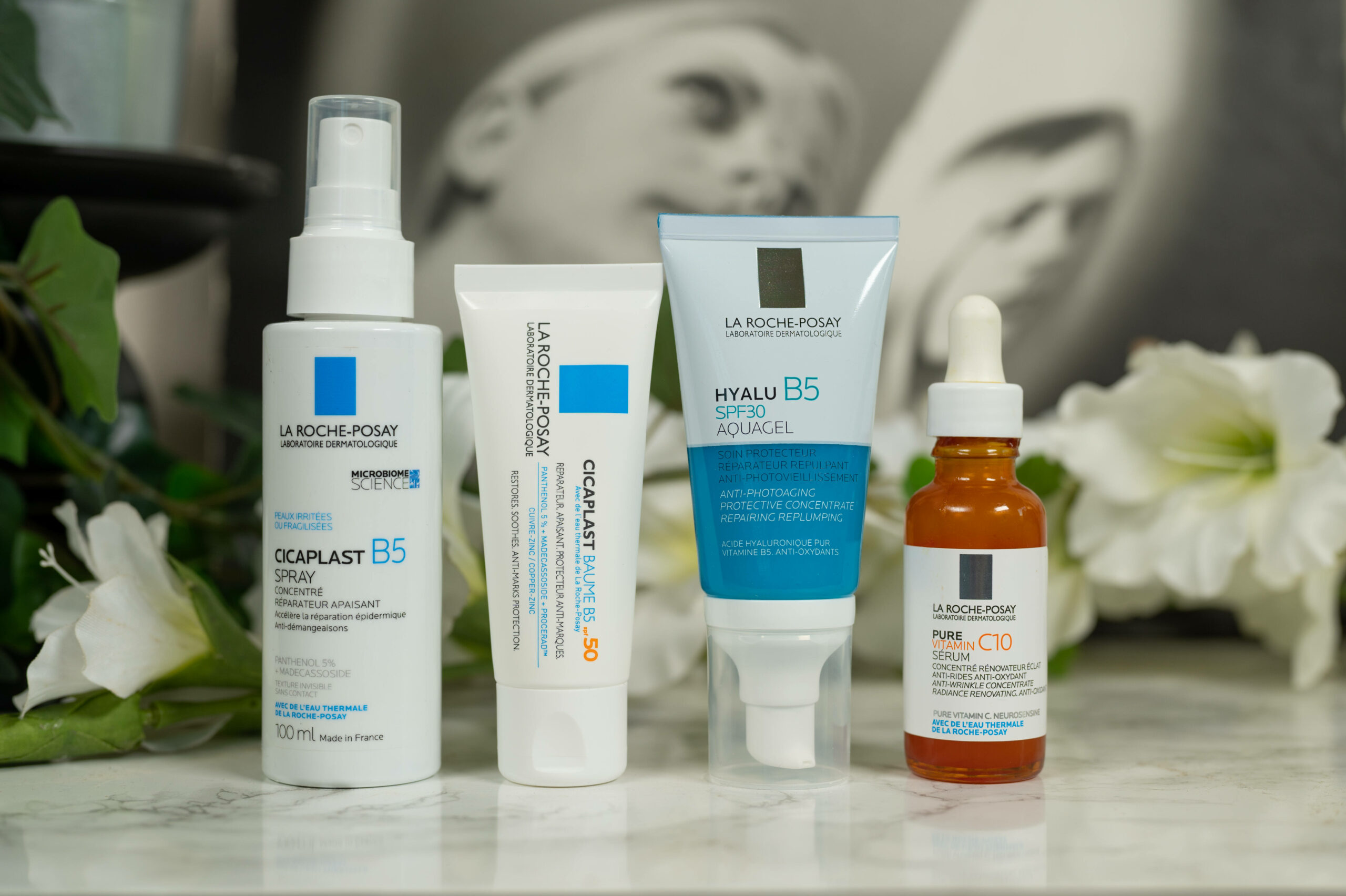
Products with Dexpanthenol
I said in the introduction that most of us have most likely been using Dexpanthenol for years. The first ointment with Dexpanthenol was released in 1944 and has since been used in nappy rash creams, to protect cracked nipples in nursing people and to treat hands that need frequent washing.
Commonly known is Bepanthen with 5% Dexpanthenol (100 g for 23,59 €), but La Roche Posay also uses it a lot in the Cicaplast line I talked more about earlier this month, with the La Roche Posay Cicaplast Baume B5+ (100 ml for 19,50 €, full review here) being the best known one.
Bottom line
Panthenol in the form of Dexpanthenol is moisturizing, helps with barrier repair and potentially with wound healing, so is an ingredient to look for in irritated skin and to prevent scarring in wounds. Adverse reactions are rare, but always possible and it can be used everyday, even multiple times daily.
The concentration to look for is around 5%, which is what is found in Bepanthen or the La Roche Posay Cicaplast products.
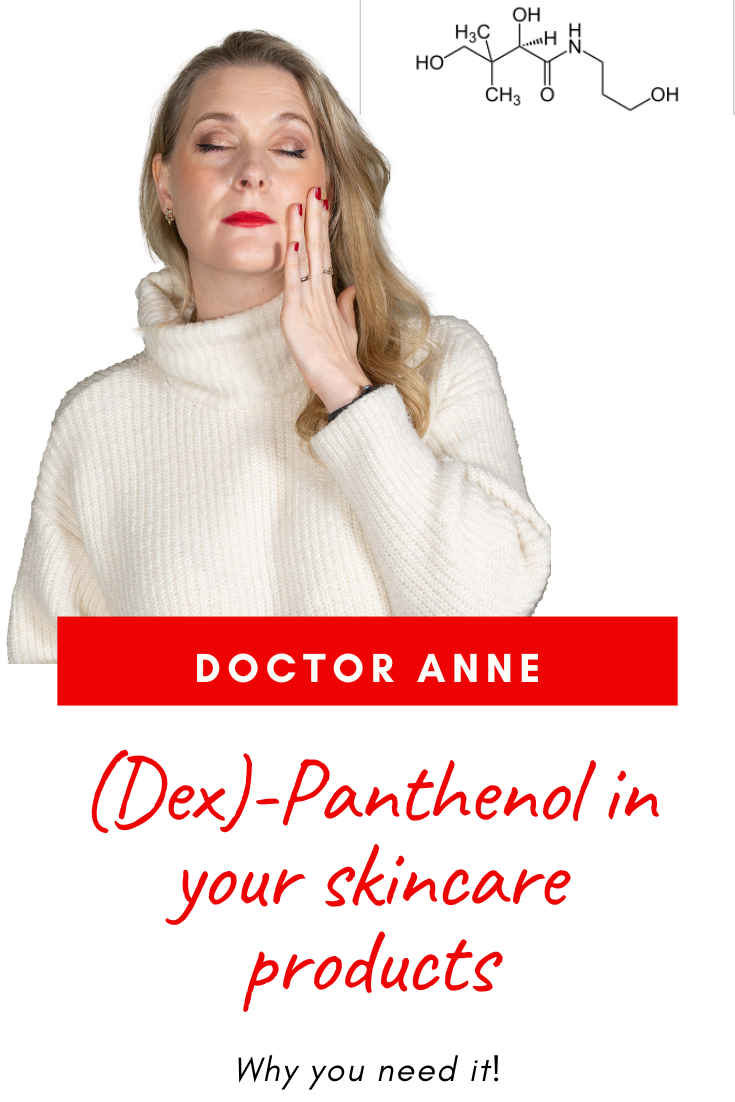
Shop the post
Sources:
Yang, M., Moclair, B., Hatcher, V., Kaminetsky, J., Mekas, M., Chapas, A., & Capodice, J. (2014). A Randomized, Double-Blind, Placebo-Controlled Study of a Novel Pantothenic Acid-Based Dietary Supplement in Subjects with Mild to Moderate Facial Acne. https://doi.org/10.1007/s13555-014-0052-3
Stettler, H., Kurka, P., Lunau, N., Manger, C., Böhling, A., Bielfeldt, S., Wilhelm, K. P., Dähnhardt-Pfeiffer, S., Dähnhardt, D., Brill, F. H. H., & Lenz, H. (2017). A new topical panthenol-containing emollient: Results from two randomized controlled studies assessing its skin moisturization and barrier restoration potential, and the effect on skin microflora. Journal of Dermatological Treatment, 28(2), 173–180. https://doi.org/10.1080/09546634.2016.1214235
Proksch, E., & Nissen, H. P. (2002). Dexpanthenol enhances skin barrier repair and reduces inflammation after sodium lauryl sulphate-induced irritation. Journal of Dermatological Treatment, 13(4), 173–178. https://doi.org/10.1080/09546630212345674
Nisbet, S. J., Targett, D., Rawlings, A. V, Qian, K., Wang, X., Lin, C. B., Thompson, M. A., Bulsara, P. A., & Moore, D. J. (2019). Clinical and in vitro evaluation of new anti-redness cosmetic products in subjects with winter xerosis and sensitive skin. International Journal of Cosmetic Science, 41(6), 534–547. https://doi.org/10.1111/ics.12559
Gorski, J., Proksch, E., Malte Baron, J., Schmid, D., & Zhang, L. (n.d.). pharmaceuticals Dexpanthenol in Wound Healing after Medical and Cosmetic Interventions (Postprocedure Wound Healing). https://doi.org/10.3390/ph13070138
Fernandes, R. A., Santiago, L., Gouveia, M., & Gonçalo, M. (2018). Allergic contact dermatitis caused by dexpanthenol—Probably a frequent allergen. Contact Dermatitis, 79(5), 276–280. https://doi.org/10.1111/cod.13054
Baron, J. M., Glatz, M., & Proksch, E. (2020). Optimal Support of Wound Healing: New Insights. In Dermatology (Vol. 236, Issue 6, pp. 593–600). S. Karger AG. https://doi.org/10.1159/000505291
Don’t forget to check out the Discount Code Page on top if you want to save some money on your next skincare purchase.
If you want to get a vote in the next Ask Doctor Anne Topic, Ingredient Spotlight or product I review, don’t forget you can head over to my Patreon account to get more involved!
